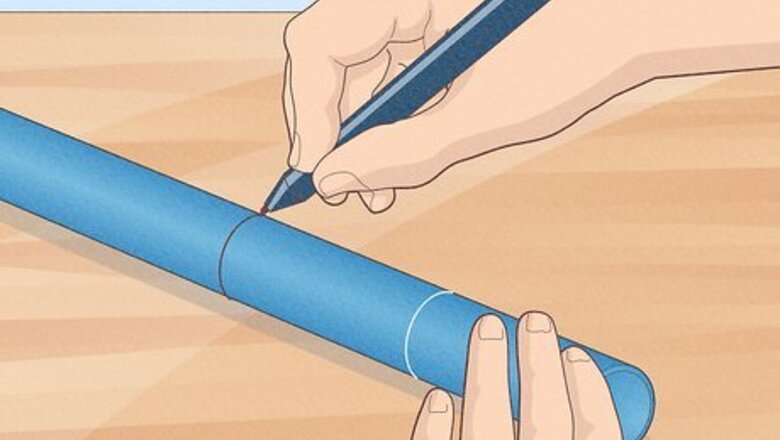
views
- Pour enough sand into the PVC pipe to fill it past the point you want to bend. This helps the pipe keep its shape and prevent kinks when you go to shape it.
- Then, set a heat gun to medium-high and hold it 2–3 in (5.1–7.6 cm) from the pipe until it’s pliable, or about 2-3 minutes.
- Wear heat-proof gloves and use your hands to bend the heated PVC into shape, or bend the PVC around a metal can to make a more uniform shape.
Using a Hairdryer or Heat Gun
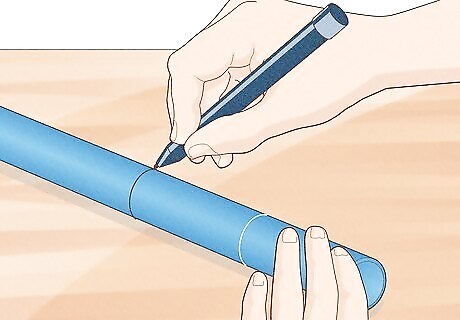
Mark where you want to bend the pipe with a marker. Make a mark where the center of the bend needs to be, then mark an extra 6–8 in (15–20 cm) on either side of this center mark. This will be your "heat zone," where you direct the heat. Keep your planned bends at least 3–5 in (7.6–12.7 cm) away from any joints for the best results.
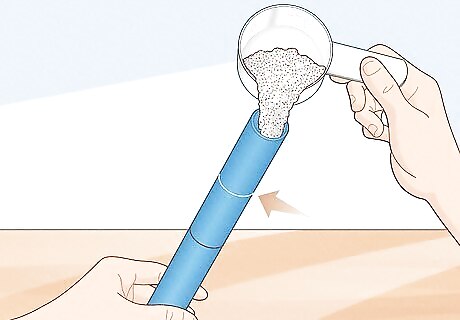
Fill the pipe with sand 2–3 in (5.1–7.6 cm) above your bend mark. This step isn’t strictly necessary, but the sand helps the pipe keep its shape as you bend it. Make sure the sand fills the entire area of the planned bend. You may need to block the end of the pipe with tape or a pipe cap to prevent the sand from falling out. Or, insert a specialized bending spring that’s about 1–2 mm (0.039–0.079 in) smaller than the diameter of the pipe.
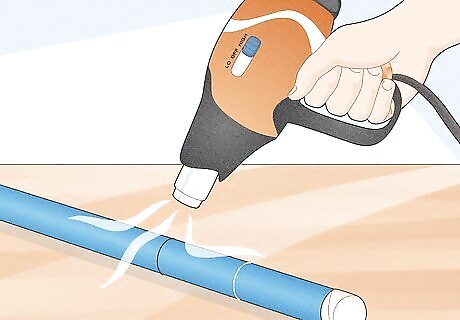
Heat the planned bend area with a heat gun or hair dryer until it’s pliable. Set the heat gun to medium-high (or a hair dryer to high) and position it 2–3 in (5.1–7.6 cm) from the pipe. Slowly move it back and forth along the planned bend, slowly rotating the pipe as you do so. How long you heat the pipe depends on its size and thickness. It may take several minutes, so heat the pipe until it begins to bend slightly on its own, from gravity. Note that a hair dryer may take significantly longer to adequately heat the pipe since it outputs much less heat than a heat gun. Heat your PVC outside or in a well-ventilated area and consider wearing a protective mask. PVC can emit toxic chemicals when heated.
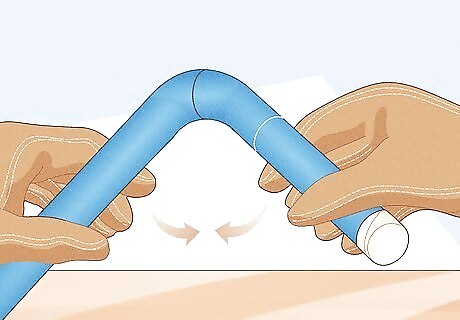
Slowly bend the pipe, applying more heat as necessary. While wearing heat-proof gloves, gently bend the pipe to your desired shape, reheating it as necessary. For a more exact and uniform bend, bend the pipe around a metal can or other sturdy object to provide a predetermined shape.
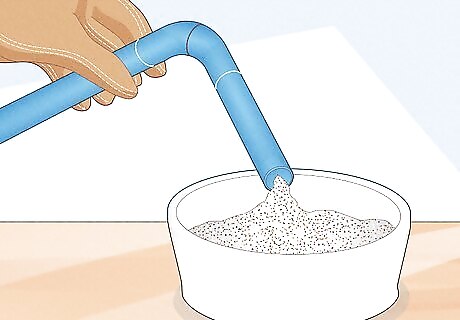
Allow the pipe to cool for 5-10 minutes, then remove the sand. Keep the bent pipe in position for 5-10 minutes while it cools or pour cold water over it to speed up the process. Then, pour the sand out of the pipe.
Using Hot Sand

Mark the planned bend on the pipe with a marker. Mark where the center of the bend will be, then also mark 6–8 in (15–20 cm) on either side of this center mark. This provides a clear guide for when you go to bend the pipe. Plan to make your bends at least 3–5 in (7.6–12.7 cm) away from any joints for the best results.
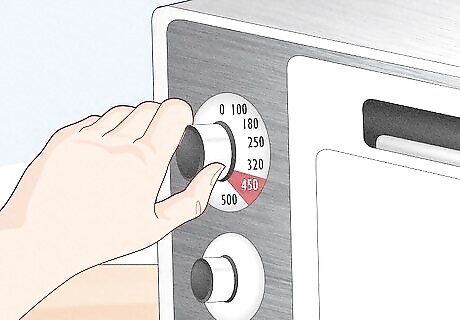
Heat a tray of sand in the oven at 450 °F (232 °C) for about an hour. Pour enough sand to fill the planned bend into a metal tray, then heat it in the oven for about an hour. Use a thermometer to monitor the sand, and take it out when it reaches about 300–400 °F (149–204 °C). Mix the sand with a spoon every 20 minutes or so to help it heat evenly.
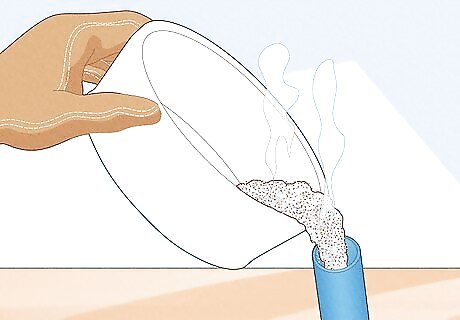
Fill the pipe with hot sand so that it fills the planned bend area. Block off one end of the pipe with heat-proof tape or a pipe cap. Then, wearing heat-proof gloves, use a metal spoon or a funnel to transfer the sand into the pipe. Let it sit and heat the pipe for about 3-5 minutes.
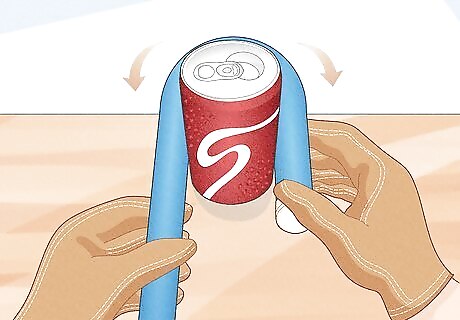
Slowly bend the pipe into your desired shape. While wearing heat-proof gloves, slowly and gently bend the pipe into the shape you want. For a rounder, more even bend, find an old can or a similar round, heat-proof object and bend the pipe around that. If needed, heat the pipe with a heat gun, holding it 2–3 in (5.1–7.6 cm) from the pipe, to help it along.

Let the pipe cool for 5-10 minutes, then remove the sand. Hold the pipe in shape until the sand and pipe both cool to about room temperature, then pour out the sand. Avoid bending the pipe again once you've removed the sand. Feel free to save the sand to use later, reheating it as many times as you want to bend new pipes.
Other Simple Ways to Bend PVC

Pour boiling water into thin PVC pipes to make them pliable. Some thin pipes can be bent by the heat of boiling water. Fill the pipe past the bend with boiling water, then wait 1-2 minutes for the pipe to soften. Pour the water out, then mold the pipe with your hands (making sure to wear heat-proof gloves). Similarly, funnel steam from a boiling kettle into the pipe for 5-10 minutes to make it pliable for a short time. The drawback of oiling water is that it’s difficult to keep the pipe’s shape or prevent kinks, but this method can work in a pinch.
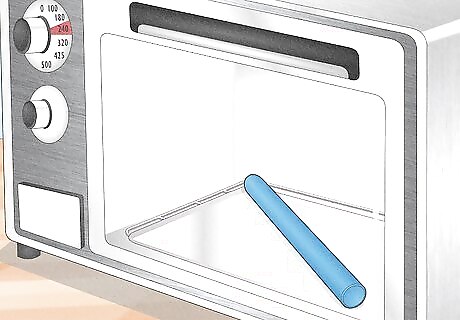
Heat short pipes in the oven. Place the pipe on a metal tray and heat it in the oven at 220–240 °F (104–116 °C) for about 5-10 minutes, or until it’s pliable. Then, wear heat-proof gloves and bend it into shape. Of course, this method only works for smaller pipes that can fit in your oven. Fill the pipe with sand before bending it to help it keep its shape. Monitor the pipe closely as you heat it, as different PVC materials may heat more quickly than others.




















Comments
0 comment